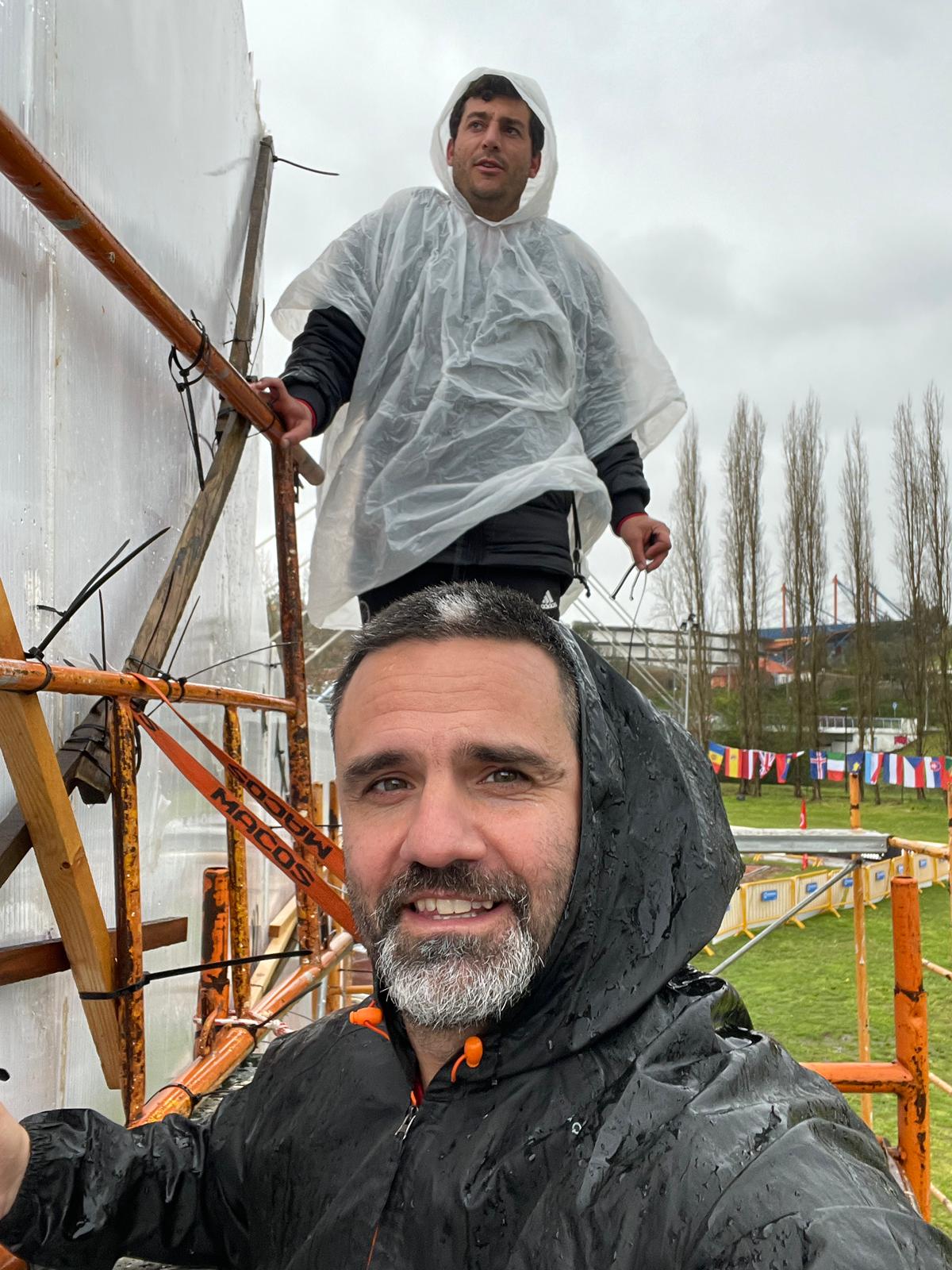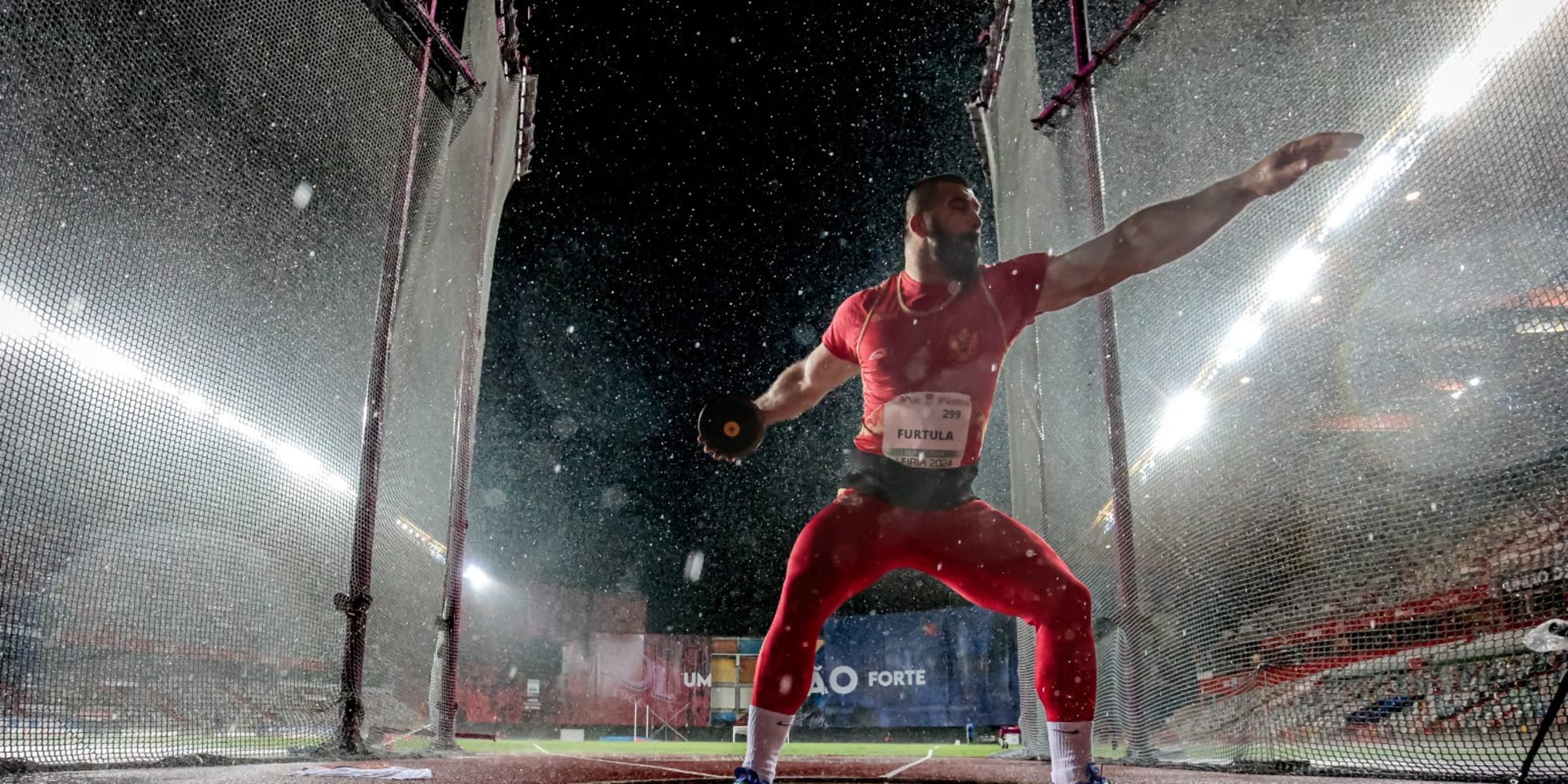Extreme weather events are becoming an increasingly frequent phenomenon around the world. Cyclones, flooding, heatwaves, and landslides have resulted in all-too-common media reports, with uncomfortable images of human and ecological devastation.
In recent years we have seen catastrophic wildfires in the United States and Canada, heatwaves in India and Pakistan, freezing temperatures in Afghanistan and mild European winters, complete with record-breaking highs in rainfall. In Europe, we are experiencing the warmest and wettest months on record.
Science confirms that human activity, in particular the release of CO2 emissions is causing climate change. It is impacting our day to day lives, and of course, sport too is affected.
Athletics, as a predominantly outdoor sport, is already suffering. Strategic planning is required by event organisers to accommodate unpredictable, and potentially unsafe conditions.
Extreme heat
Extreme heat in Budapest last summer forced organisers of the World Athletics Championships to alter event schedules, in attempt to avoid midday and afternoon temperatures, in excess of 30 degrees.
The sport is increasingly mindful of the wellbeing of athletes, particularly in endurance runners, competing in extreme heat.
This month’s European Throwing Cup in Leiria, Portugal was seriously impacted by heavy rainfall which massively disrupted the competition.

Antonio Carvalho is the Local Organising Committee’s Event Coordinator and Media Manager. He said: “We've had the European Throwing Cup in Leiria for the last three years, and it's always been sunny the week before, sort of sunny and mild the week after, but on the weekend of the event, it always rains on Saturday.
“So, that's what we expected - a little bit wet on Saturday… and on Sunday, usually the sun comes out.”
Severe weather
Carvalho and his team had been checking forecasts constantly to prepare, but he explains the event experienced far worse weather than expected.
‘It was a severe weather event, very unpredictable. You could have sunshine one minute and heavy rainfall, with thunderstorms, and lightning the next minute. There were gusts of wind like I've never felt before.
“All the tents in the National Throwing Centre were shaking. We saw the podium almost flying away. It was a very quick weather event - almost like a mini hurricane took place.
“We saw something that is very unusual for Portugal in March. You might have weather like that in the peak of winter, one or two days where you wouldn't go out.”
Resilience and flexibility
The European Throwing Cup was contested by over 300 athletes, representing a total of 41 nations. Carvalho explains the athletes, having travelled to Portugal, were anxious to compete. He explains:
“They were ready, they were all hyped up, they had their warm‑up done. But for throwers, it's risky because of the very slippery surfaces and all the rotation, which obviously increases the risk.”
Flooded throwing circles had to be drained of water with machinery, and also human effort to manually take water from the circles with buckets. Organisers had to dig additional drainage routes for the rainwater to reach a nearby stream.
The National Throwing Centre, where the hammer and most discus events took place, is built on a flood plain, meaning most of the flooding in and around the cage, was caused by the sudden increase in underground water levels.

It was impossible to continue as planned, and competition venues had to be changed. The men’s discus moved to the Municipal Stadium of Leiria, a purpose-built infrastructure which offered more sheltered areas for athletes, coaches, officials and volunteers.
Resilience and flexibility were required on the part of the organisers, but Carvalho is keen to also praise the athletes for their cooperation and spirit in the challenging circumstances.
One of the first to arrive at the National Throwing Centre was 21-year-old Muhamet Ramadani from Kosovo. The former European U20 Champion started cleaning the shot put circle on his own initiative. He went on to claim the gold medal in the U23 men’s event with 18.54m.
“There were some great overall results, says Carvalho. “There was a European lead in the men's discus, and there were also some national records. I think athletes are very resilient by nature and they were there to compete and to impress, as this is an Olympic year.”
However, pressures on the organisers were enormous. They battled extreme weather conditions in attempt to allow the athletes to perform at their best, alongside the greater challenge of keeping everyone safe.
“Our priority was athletes' safety, and providing them with the best conditions to perform, but they were so eager to compete, says Carvalho. “They just wanted to get it done and dusted!
Athlete safety
“We only allowed them to go back out when we thought it was safe for all. And still we were doubting ourselves all the time… just in case something might happen. It is an Olympic year, and no one wants to get injured! At the end of the day, it was our call to let them go out - when it was safe.”
Finding solutions was imperative, and rescheduling some events had to be taken into consideration, however, as Carvalho explains, the impact would have been far-reaching.
“Rescheduling an event would have had an impact, not only on transportation, accommodation, and catering, but also on those flying back to their country the day after.
“Some of the athletes would have been impacted very seriously. Imagine coming all the way to Portugal and then not being able to compete because we might have to move the event to the next day.”
Good performances
The event realised the ambition of good performances in a safe environment, the outstanding example being Portugal's Irina Rodrigues setting a world lead and national record of 66.60m in the women's discus.
Carvalho offers practical advice on how this can be achieved in this increasingly unpredictable world of weather.
“Definitely have a risk assessment! It's a no-brainer having a risk assessment and having the equipment in place. Your staff also need to be trained, and ready to act when needed.
“It’s risk assessment preparedness - having everyone informed, what are the steps to take? It takes strong leadership, including a strong team of middle managers to then work with volunteers.
“Training here is vital - training and informing people what are the risks, and what are the measures that we're going to put in place should scenario A, B or C occur. I think that's very important.”
“Communication is key, as cliché as it sounds. Having someone, or a small group of people who can give directions to everyone else, because people will react differently! Bear in mind that you are working with volunteers, who don't have that responsibility of making such strong decisions.
“We were organised to create a last-minute Crisis Management Team on site, which included technical delegates, LOC coordinator, LOC president, and the European Athletics project leader.
“We were the ones making decisions, everyone else just acted according to our directions. We were working with a group of people who were very experienced, very knowledgeable, used to thinking on their feet.”
“As I explained, the first thing I had to do as event coordinator, was to ask my team to look at the flights for each athlete competing, what time were they leaving the next day, would they be impacted?
“It requires being proactive, and it requires having all your information ready for you to access easily so you can implement in any situation. Lots of planning and organisation.
“You have a very short period of time to make a decision and that decision needs to be the best one for the athletes; not for the host city, not for the organisers not for anything else. Whatever decision you make is always based on what it's best for the athletes.”
Partnership approach
In a more global sense, when addressing climate change, Carvalho advises fostering strong relationships with host cities.
“I think the first point for organisers to get started is setting up good partnerships with the host cities. Here in Europe, most of the councils, most of the host cities, already have a sustainability programme in place.
“For example, using public transportation for an event rather than having buses or dedicated cars - that's a step forward because not only you are reducing CO2 emissions, but you're also promoting healthy lifestyles.
“You want more people to walk from one place to another, you want more people to use public transport, you want less people to use cars, especially in places where there is a good public transport network. “
Carvalho also believes our elite athletes have a valuable role to play, as champions of climate action and behaviour change.
“I think we need to use our athletes as the voice, as the ambassador in this fight for a more sustainable world, because they are impactful in so many ways - not just in the sense of practising sport, but in terms of lifestyle and how resilient some of them are and the challenges they overcome.
“I think a lot of people resonate with athletes, even people that don't practise sport. I think we have an opportunity here that is very special.
“Sport is a catalyst for societal change, and I think we need to jump on board with what the IOC (International Olympic Committee) is already doing, what World Athletics is already doing. European Athletics is also investing in it.
“I think we've got the means to do something about it. We just need to stop talking about it and actually start doing something about it.”
Rhona McLeod for European Athletics
Main photo courtesy of Luis Barreto





